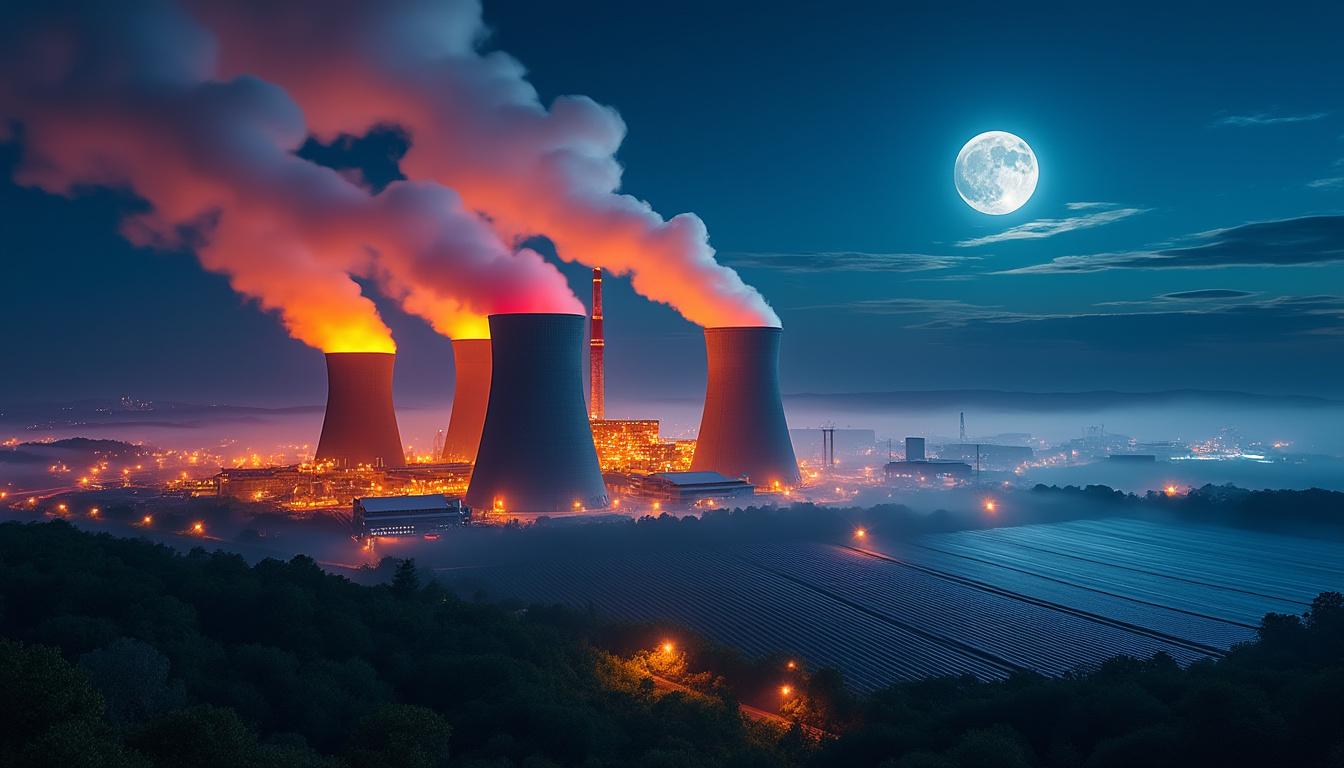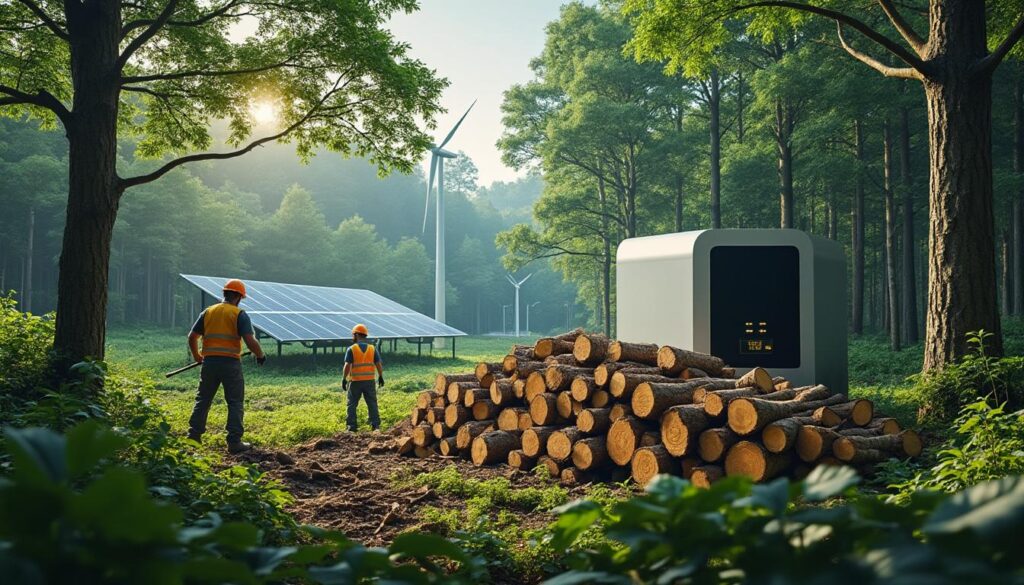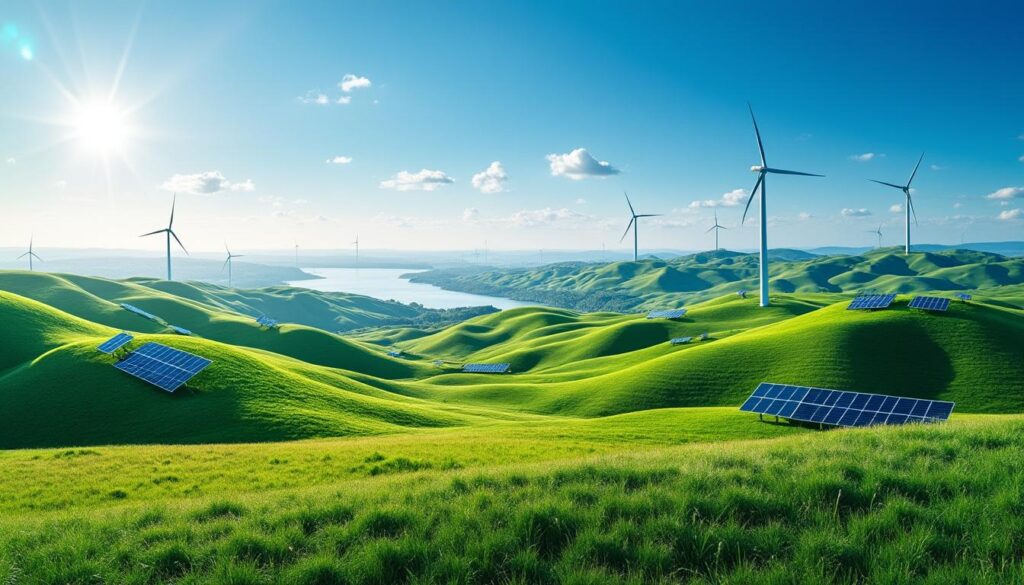The global use of coal reached a new record in 2024, even with the expansion of renewable energies. This scenario influences electricity, industry and, ultimately, the comfort and costs of your homes.
To save time, here’s the essential.
Short on time? Here’s what you need to know:
| ✅ | Summary ⚡ |
|---|---|
| ✅ Key point #1 | Global coal consumption hit a record in 2024 (~8.8 billion tons), driven by China, India and Indonesia 🌏, despite the decline in advanced economies. |
| ✅ Key point #2 | Solar and wind are growing rapidly ☀️💨, but need to double the annual rate to keep the 1.5°C target within reach. |
| ✅ Key point #3 | Common mistake: focusing only on energy production and forgetting about building efficiency 🏠; without reducing demand, coal continues to fill the gap. |
| ✅ Key point #4 | Immediate action: plan for passive measures (insulation, air tightness, shading) and electrification (heat pump + photovoltaics) to cut dependency on coal. |
Global Coal Consumption in 2024: historic record and implications for energy and housing
The State of Climate Action report confirmed: coal’s share in electricity fell thanks to the advance of renewables, but total energy demand rose and, with it, coal usage. It’s the contradiction of the moment: cleaner energy is being produced, yet the global appetite continues to grow faster than fossil replacements.
This increase was asymmetrical between regions. While Europe and some segments of the US pulled back on consumption, China, India, and Indonesia largely made up the difference. In China, industrial expansion and supply security during peak demand continue to support coal-fired plants. In India, the symbolic surpassing of 1 billion tons of production was celebrated as a development driver, even with the country installing solar at an intense pace.
The outlook for 2025 does not ease the tension: climate authorities warn that to meet the 1.5°C target, the electrification of sectors like transport and heating must advance, but this only works if electricity is low-carbon. Otherwise, pollution from exhaust and chimneys gets transferred to coal-fired plants.
In domestic life, the reflection is direct. Rates pressured by fossil fuels make electricity bills more volatile. Buildings with poor efficiency “demand” more kilowatt-hours in winter and summer; and when the grid needs to respond quickly, it is often coal that comes into play. Thus, the inefficient home is doubly costly: it pays more and accelerates the cycle of peaks that bring coal into the system.
Beyond energy, the report points out other concerning fronts: loss of carbon sinks (over 8 million hectares of forest lost in 2024), carbon intensity of steel rising and global energy efficiency below what is needed. With light-duty vehicles accelerating electrification (over 20% of new vehicle sales are electric, and in China nearly half), the challenge shifts to “cleaning” the grid and improving buildings.
In light of this scenario, it’s essential to separate myths from practical paths. Homes that consume less and consume better relieve the grid and reduce the need for coal during critical hours. If the question is “what can I do now?”, the answer starts with efficiency, continues with clean electrification and ends with smart demand management.
- 🌡️ Reduce demand: roof and wall insulation, efficient windows, infiltration control.
- ⚡ Electrify efficiently: heat pumps and induction stoves decrease dependency on gas and coal.
- ☀️ Local production: photovoltaics with load management and, when possible, batteries.
- 🕒 Flexibility: shift consumption to hours with more renewable available (schedulers, dynamic tariffs).
| 🌍 Region | 📈 Coal trend | 🔌 Main factor | 🏠 Implication for homes |
|---|---|---|---|
| China 🇨🇳 | High in 2024 | Industrial growth and peak security | Price volatility; more value in PV + heat pump |
| India 🇮🇳 | High with record production | Growing demand and infrastructure | Thermal efficiency critical for comfort |
| Europe 🇪🇺 | Relative decline | Renewables and climate policies | Nearly zero energy buildings accelerate |
| Americas 🇺🇸🇧🇷 | Mixed | Diverging policies in the US; renewables in Brazil | Load management reduces coal peaks |
Key message: without efficient homes, the grid remains at the mercy of coal during peaks; efficiency is the first “power plant” to install.

Impact of coal record on electricity and bills: how to protect your budget and the climate
When demand rises and renewables don’t suffice, the system resorts to fossil plants to meet peaks. Coal, despite being more polluting, is often the “last resort” available with firm capacity. The result? Price spikes in the wholesale market, which eventually reflect on tariffs and regulatory adjustments.
There is a cascading effect in buildings. Poorly insulated homes require higher thermal loads, increasing demand during critical hours. In contrast, a house with an efficient envelope, external shading and night ventilation needs less energy, flattening the consumption curve and, practically, reducing the grid’s coal demand.
A practical example: a 3-bedroom apartment from the 90s in Lisbon, without intervention, may require 120–150 kWh/m².year for heating and cooling. After roof insulation, window replacement with low-emission glass, and a heat pump A+++, the need can drop to 35–50 kWh/m².year. Comfort increases and bills decrease, especially when paired with photovoltaic panels and using time-of-use tariffs.
Well-planned electrification is an ally. Heat pumps extract 2–4 times more heat per kWh than electric resistances, allowing heating and DHW with lower consumption. And when integrated with PV + smart controls, they shift operation to windows with more renewable, reducing emissions and costs.
- 💡 Measure to decide: energy audit, plug meters, analyzed bills.
- 🧊 Efficient climate control: heat pump, filter maintenance, climate curves.
- 🪟 Envelope: sealing leaks, thermal curtains, exterior blinds.
- 🔋 Management: schedule DHW, washing machine and EV charging during solar/off-peak hours.
| 🏠 Measure | 💶 Typical investment | ⏱️ Payback | 🌫️ Effect on “coal hour” |
|---|---|---|---|
| Roof insulation | Medium 💰💰 | 2–5 years | Reduces peaks for heating/cooling |
| Efficient windows | High 💰💰💰 | 6–10 years | Flattens the demand curve |
| Heat pump A+++ | Medium/High 💰💰💰 | 3–7 years | Greater efficiency during critical hours |
| Photovoltaics + control | High 💰💰💰 | 5–9 years | Self-consumption during solar hours ☀️ |
Want to delve deeper into this topic with an expert? Look for clear and objective videos about the connection between coal, prices, and the electric transition.
Key idea: each kilowatt-hour that is no longer needed in an efficient home reduces the pressure to trigger coal on the grid.
Accelerated transition: solar and wind grow, but need to double — concrete strategies for low-carbon buildings
The international report is clear: solar energy is the fastest-growing source in history and wind continues to expand robustly. Still, the world must double the annual growth rates of these sources to ensure emission cuts compatible with 1.5°C. The gap is not technological; it’s about scale, financing, grids, and licensing.
What does this mean for housing? The quicker the electric mix becomes clean, the more sense it makes to electrify heating, DHW, and mobility. But the transition is not “plug and play”: it requires buildings prepared for low consumption and for flexibility, capable of taking advantage of windows of higher renewable production.
In a condominium in Setúbal, a phased plan proved effective: first, insulation of roofs and facades (immediate load reduction); second, collective heat pumps with climate curves; third, PV on the roof with self-consumption sharing; finally, a pilot of batteries to “level” peaks from late afternoon. The result was a 38% drop in grid energy use during critical hours.
The flexibility on the demand side is the invisible complement of renewables. Scheduling DHW, managing EV loads, and shifting washing machines to solar hours have a real impact. Dynamic tariffs and simple controllers already allow for quick-return behaviors.
- 📊 Prioritize efficiency before adding capacity: fewer kWh, more impact.
- 🔁 Control and automation: smart thermostats, timers and scheduling by price.
- 🌬️ Air quality: low-consumption HVAC ensures comfort without thermal losses.
- 🏢 Energy communities: sharing PV in buildings reduces coal dependence.
| ⚙️ Action | 🎯 Objective | 📉 Impact in kWh | 🧠 Control requirement |
|---|---|---|---|
| Insulation + air tightness | Cut thermal loads | 30–60% in heating/cooling | Low (construction and verification) |
| Heat pumps | High efficiency in heating/DHW | 2–4x fewer useful kWh | Medium (curves and maintenance) |
| PV + self-consumption | Replace grid kWh | 20–50% of consumption | Medium/High (load management) |
| Storage | Shift use to clean hours | 10–25% of peak shifted | High (BMS/EMS) |
For those seeking practical guidance, the platform Ecopassivehouses.pt gathers ideas and best practices on efficiency, eco-friendly materials, and energy integration — direct utility for each phase of project or rehabilitation.
Summary of this part: efficiency + electrification + flexibility = less room for coal in the system.
Coal policies and geopolitics: China, India, USA and decisions leading up to COP30
The 2021 commitments called for a gradual reduction of coal. However, the reality of 2024 showed new global highs. Why is this happening? Energy security and economic growth have weighed more on short-term decisions, especially in emerging economies. In China, despite the solar and wind boom, winter peaks and extreme summers demand firm capacity. In India, the narrative of development justifies the continued reliance on coal until networks and storage gain scale.
In the US, recent political changes have reopened doors to fossil fuels and complicated licenses for renewable projects. Although emissions have not yet surged, the trend may delay investments and affect supply chains. The good news is that the EU and China continue to push renewables and grids, reducing some of the global impact.
The report emphasizes: there is no chance of achieving 1.5°C with record coal. To correct the trajectory, it is vital to align market policies, infrastructure, and support for clean technologies. The meeting of COP30 in Brazil thus assumes strategic weight: each country will need to update its national contribution, and the central question is how to raise ambition with concrete and credible plans.
Key measures gain urgency: remove inefficient fossil subsidies, accelerate renewable connections to the grid, create flexibility markets, and support the requalification of coal regions. On the demand side, building codes and efficiency programs for existing buildings are quick-result levers.
- 🧭 Regulatory predictability to unlock investment in grids and renewables.
- 🏭 Decarbonize industries (steel, cement) with clean electricity and green hydrogen.
- 🌳 Protect sinks: curb deforestation — the world needs to act 9x faster.
- 👷 Just transition in coal regions with training and new value chains.
| 🗺️ Act | 📅 Horizon | 🔄 Mechanism | 🌡️ Expected impact |
|---|---|---|---|
| Eliminate coal without capture in new generation | Immediate | Regulation and auctions | Avoids lock-in of emissions |
| Double renewable connections | 2–3 years | Simplification of licenses | More clean kWh in the system ⚡ |
| Efficiency in buildings | 1–5 years | Incentives and codes | Reduces coal peaks |
| Reinforcement of grids | 3–7 years | Capex and planning | Integration of wind/solar 💨☀️ |
To contextualize these choices and capture global perspectives, it is worthwhile to see independent analyses on coal, COP30, and energy transition.
Practical insight: policies that target demand and peak consumption accelerate the exit from coal more than vague promises about 2050.
From theory to practice: passive architecture solutions to cut coal dependence now
If electricity still incorporates coal during critical hours, the best strategy is to require less energy during those hours. Passive architecture offers low-risk solutions, predictable returns, and superior comfort. The goal is to design (or rehabilitate) so that the house “works in your favor”: less loss, controlled solar gains, healthy ventilation, and reduced thermal loads.
It starts with the envelope. Roof insulation is the intervention with the greatest cost-benefit ratio; walls and floors follow as needed. Windows with thermal breaks and low-emissivity glass stabilize interior temperatures. Air-tightness reduces infiltrations and noise: seals, treated shutter boxes, and care with penetrations.
Next, the solar control. External shading (brises, shutters, louvres) prevents excessive gains in summer, while in winter the correct orientation allows for solar capture. Planting deciduous species is an intelligent bioclimatic resource. Controlled mechanical ventilation with heat recovery ensures clean air with minimal waste.
In the rehabilitation of an apartment in Braga, the combination of roof insulation, window replacement, low-consumption MVV and an inverter heat pump reduced annual energy use by 44%. Adding 3.6 kWp of PV for self-consumption and scheduling DHW for solar hours greatly decreased grid consumption during peak times — and that’s when coal usually kicks in.
- 🧱 Envelope first: without insulation, any system works under strain.
- 🪟 Windows and shading: summer and winter comfort, less climate control load.
- 🌬️ MVV with recovery: health and efficiency simultaneously.
- ⚙️ Commissioning: fine-tuning equipment ensures real, not just theoretical performance.
| 🏗️ Passive/active solution | 📐 Effect | 🧮 Load reduction | 🕒 Role in peak |
|---|---|---|---|
| Roof insulation | Less losses through transmission | 15–30% heating | Delays/lowers the morning peak |
| Brises/exterior shutters | Less solar gains | 20–40% cooling | Avoids afternoon peaks ☀️ |
| VMC with recovery | Clean air with low kWh | 5–15% climate control | Softens continuous loads |
| PV + load management | Smart self-consumption | 15–35% grid consumption | Moves use to clean hours |
For those pondering “where to start tomorrow?”, the answer is simple: an inspection of the envelope, followed by a phased plan with priorities and budget. The result is not just a lighter bill; it’s less coal triggered when the system strains. Starting today with one measure — even if small — changes the game.
Source: www.rtp.pt


